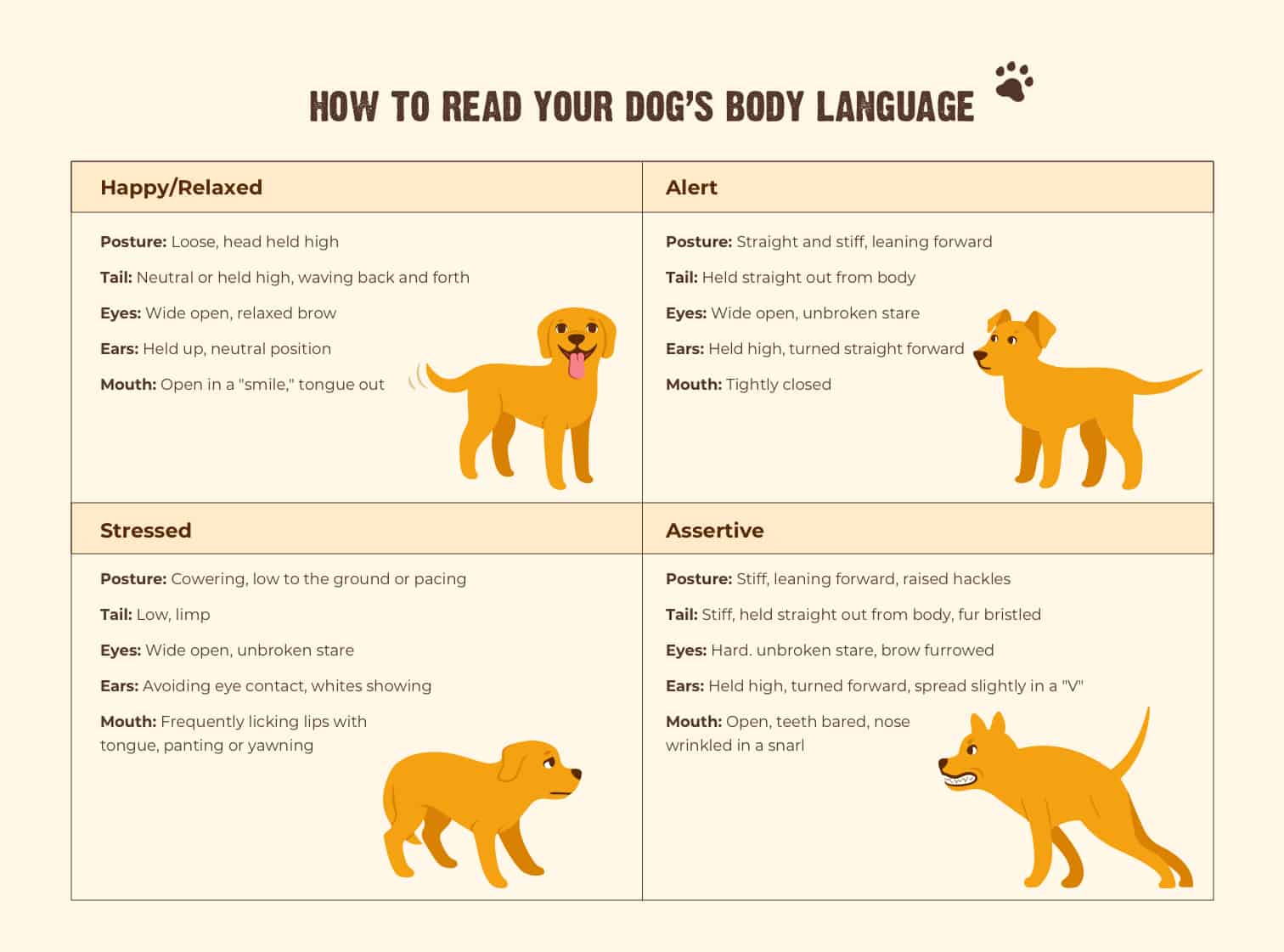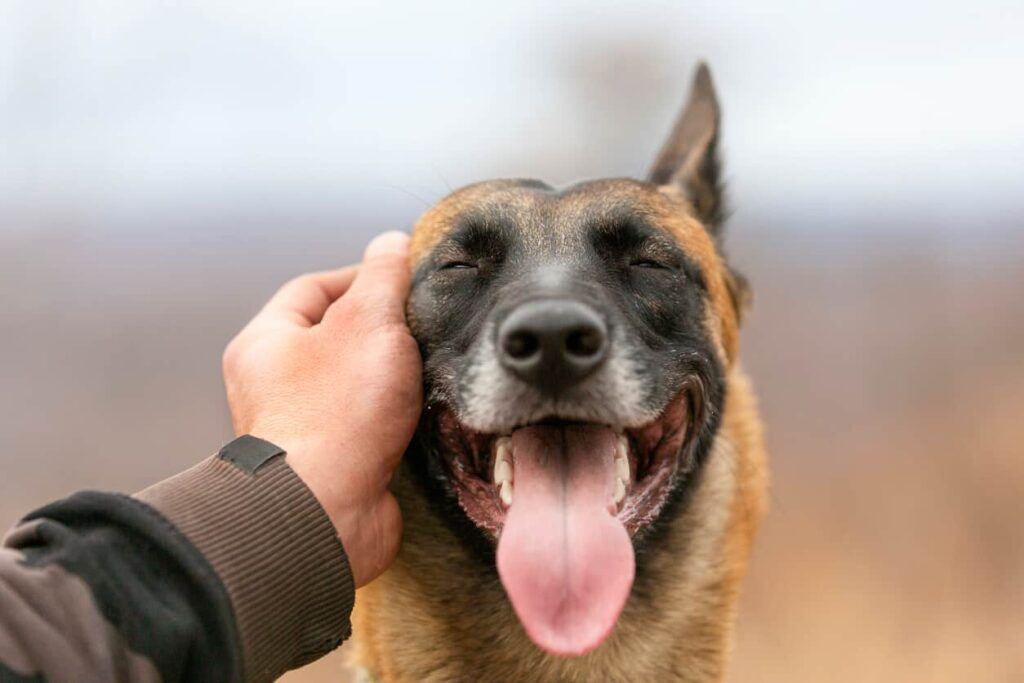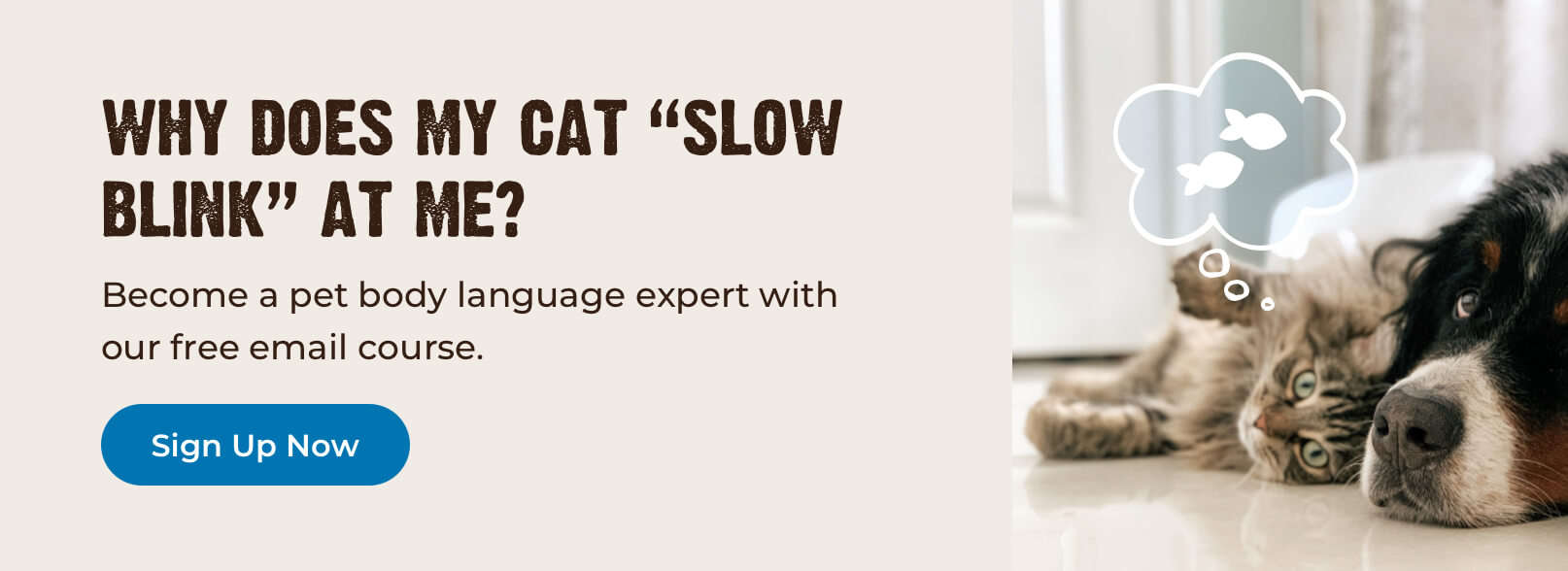If you have a dog, chances are you consider them your family. And no one understands you like family, right? As close as you and your dog may be, sometimes their behavior can be a little hard to read. They are a different species, after all — but that doesn’t mean you can’t understand or communicate with them!
How to Understand Your Dog
Dogs rely on a range of behaviors to communicate, including:
- Posture
- Facial expression
- Ears
- Tail movements and position
- Mouth shape
- Vocalizations
Understanding your dog’s behavior or body language can create a strong bond between you and your pet; it’s also an important part of being a responsible dog owner. If you are able to discern what your dog is thinking or feeling based on their posture and mannerisms, you can give them what they want or need, help them feel safe and comfortable or know when to give them space.
Dogs can be quite vocal themselves, but they rely primarily on nonverbal cues and body language, both to communicate and to understand others (human or animal). As such, this can lead to any number of misunderstandings between dogs and their people.
Context Matters
Since dogs can express their feelings quite differently from humans, it’s important to take context into account. What’s happening around your dog that may inspire certain reactions? Are there loud noises, strange people or animals or an unusual weather event? Maybe they ate something they shouldn’t have? A dog that’s running in circles and yipping might want to play, but they might also be anxious. Context is almost more important than the specific behaviors your dog is displaying; sometimes, a dog’s behavior may mean something entirely different from the human equivalent.
Speak!
It’s one of the first animal noises children learn when they’re learning to talk — “Woof!” This short, loud vocalization can mean any number of things, from a greeting, to a warning, to excitement. Whatever the meaning, a barking dog likely wants some kind of attention.
Dogs are known for their barking, but they make a variety of other sounds that can express a wide range of emotions:
- Growl: Long or short, high or low-pitched, this throaty rumble can mean many different things, but it’s usually used as a warning to others. Dogs can growl when they feel threatened or nervous, but they can also growl while playing with other dogs.
- Whine: High-pitched and keening, dogs usually whine to express a specific need or emotion. Dogs whine to let their humans know they want food, want to go outside, are in pain or feel nervous or lonely.
- Howl: This long, dramatic wail is typically used to communicate with other dogs across distances, but some dogs will respond to sirens or other sustained noises by howling.
- Sigh: Dogs sigh and groan just like people! This noise often expresses boredom, tiredness or slight irritation.
Deciphering Dog Tail Language
Everyone knows what a wagging tail means, right? Well — it’s a little more complicated than that.
When a dog wags its tail back and forth, most people interpret it as happiness or excitement. However, depending on the context, a dog could wag its tail to express anxiety, overstimulation, frustration or something more assertive. Always consider the position of the tail, the speed of its movement, and other behavioral cues that could signal something more than happy excitement. Here are some tips to help you translate:
- Long, medium-slow, side-to-side sweeps in a neutral position: “Hello!”
- Fast, twitching, held high: “I’m starting to get excited, and possibly not in a good way.”
- Fast, erratic, circular motions: “I’m REALLY excited to see you!!”
- Pointing to the ground or tucked between the legs: “I am not feeling comfortable.”
- Held straight up in the air: “I am on high alert.”
In general, the faster and higher the tail wag, the more stimulated the dog. If you are familiar with your dog’s neutral tail position — how they hold their tail when they are relaxed — it will be easier to tell when your dog’s emotions change.
Happy or Relaxed Dog Behavior
A happy dog is easy to recognize, but some of their more enthusiastic expressions can be a bit startling to those unfamiliar with dogs.
A happy dog will exhibit some or all of the following:
- Bouncy, wiggly movements
- Ears held straight up, but not turned forward
- Head held high
- Loose, relaxed stance and posture
- Mouth open in a “smile,” tongue exposed
- Tail in a relaxed, neutral position OR held high and waving back and forth
- Possibly excited barking or yips
A dog’s open mouth is not an immediate sign of happiness or playfulness. Look for the smile: the corners of the mouth are turned up in a “C” shape, the teeth are partially displayed and the dog’s posture is relaxed.
Dogs that want to play will lower their upper bodies to the ground in a “play bow.” With their chest and forelegs on the ground and their rear end in the air, they are ready to spring into action, whether that’s fetching a ball or playfully wrestling with other dogs. Excited dogs often get the “zoomies,” racing around at breakneck speed with wild eyes. Be aware of external factors though; zoomies can sometimes be a symptom of heightened stress.
Relaxed dogs will often lick their humans as a sign of affection, or lean against people whom they trust. However, even if a dog that’s new to you seems friendly at first, don’t rush them into a greeting. Let them come to you, offer your hand for them to sniff and be patient. If they turn away and decide they’re not interested in you, simply let them walk away.
Stressed Dog Behavior
Stress sometimes makes people behave in strange ways. The same goes for dogs! Behaviors that may otherwise appear positive or neutral may instead be a sign that your dog is uncomfortable.
Dogs exhibit stress on a gradual scale. Slight anxiety can manifest in subtle, expected ways (shivering, whining), while extreme stress is expressed in bizarre and unsettling behavior. If you know a dog well enough, you will be able to help it avoid situations and things that cause it discomfort.
Tell-tale signs that a dog is stressed include
- Pacing or spinning: Dogs pace back and forth when they’re filled with worry. As they get more agitated, they may start to turn in circles while whining or panting. If your dog does this, note whether their paws are leaving damp prints behind. Dogs sweat through their paw pads when they are stressed.
- Cowering or crouching close to the ground: This posture makes the dog appear smaller, since a nervous dog may not wish to draw attention to itself, or may be attempting to appear submissive to a more dominant person or animal. The dog may also try to hide.
- Trembling or shivering: This can be in response to a new person or animal, an unfamiliar situation, or — if frequent and persistent — a sign of an ear infection.
- Licking their lips: Different from licking their chops after a meal, dogs will quickly and repeatedly “flick” their tongue up to touch their nose when they are feeling agitated. They may also begin abruptly licking or scratching their bodies.
- Yawning: One of the more misleading stress signals, dogs yawn to calm themselves in tense situations, and may even do so to soothe others. Dogs can “catch” yawns like people can; try yawning at your dog next time they appear stressed, and they may yawn back and relax a little.
- Avoiding eye contact: An anxious dog will pointedly look away from whatever is causing it stress. What some dog owners mistake as stubbornness or disobedience is actually a sign of the dog’s discomfort.
- “Whale eye”: When your dog gives you a sidelong glance showing the whites of their eyes, it’s a sign they are feeling uncomfortable. This is their way of looking at a stressor without pointing their face directly towards it. Dogs may also do this when they sense they are in trouble, or if they are afraid of having a toy stolen.
- Standing sideways: Dogs may stand perpendicular to a stressor, exposing their sides. This is de-escalation body language, especially to other, high energy or assertive dogs. The dog that exposes its side may wish to calm the other dog or to show that they pose no threat.
- Destructive behavior: When dogs destroy our belongings, we might be tempted to call them a “bad dog.” If a dog tends to destroy furniture and shoes while alone in the house, it’s likely a sign that they feel anxious when their humans leave.
- Rolling onto their back and exposing their belly: Take this to mean that a dog is surrendering to a more dominant force. They are not necessarily asking for a belly rub; as always, take context into consideration, as well as the stiffness of their limbs and their facial expression. A dog in this position may even urinate slightly out of anxiety.
This last set of behaviors indicates that a dog wishes to diffuse a tense situation by appearing submissive. If they are confronted by another dog they perceive as more dominant, the first dog may do everything it can to avoid confrontation, including getting physically low to the ground, avoiding eye contact, wagging its tail slightly and pressing its ears back against its head. If it's especially brave, it may attempt to lick the other dog’s face as a sign of goodwill.
Be mindful of stressed behaviors that indicate your dog may be in physical distress. If your dog exhibits any of the above, accompanied by lethargy or refusal to eat, it may be a sign of illness or digestive issues.
>Related Reading: COMMON DOG STOMACH ISSUES & DIGESTIVE PROBLEMS
Alert Behavior in Dogs
Something’s up! A dog on high alert is all angles and straight lines:
- The ears are pricked up.
- The eyes are wide.
- The mouth is closed tight.
- The face and body are turned toward the stimuli.
- The nose and forehead are smooth.
- The tail is held straight out from the body.
- One paw may be raised as if ready to spring into action.
- An alert dog may even shift its weight forward to get closer to the thing holding its attention.
Some dogs bred for hunting may exhibit these behaviors as part of their everyday life — when the mail comes, when they spot a cat or even when children are playing or running nearby. Alertness does not necessarily signal a need to go on the offensive; often, an alert dog is simply seeking more information from an unfamiliar source.
If a dog stares at something with a long, hard, unbroken gaze, it may be a sign of more assertive behavior to come.
Assertive Behavior in Dogs
No dog, regardless of breed, is aggressive by nature. Though some dogs may have more assertive temperaments, or may have been bred for hunting or chasing, a dog will always transition through other behaviors and emotions before asserting themselves. Be on the lookout for subtler signs of anxiety that may escalate into assertiveness.
When faced with a perceived threat, a dog may display assertive (commonly mislabeled as dominant) or submissive behavior for the same reason: to keep a potential threat at bay or alter the outcome of a social interaction. If you notice your dog becoming anxious or emotionally aroused, watch for these signs of heightened assertion:
- Full-body stiffening: This is one of the first indicators your dog is transitioning into a high arousal state. The dog may also lean forward, as if to be closer to the source of its anxiety.
- Ear forward: Different from happy or alert dog ears, assertive ears stand straight up, turn forward and may lean out to the sides slightly in a “V” shape.
- Raised hackles: The fur along the dog’s back may stand on end, an involuntary reaction (like goosebumps in people) called piloerection.
- Teeth bared in a snarl: Showing their full set of teeth serves as a dog’s warning to others. When a dog snarls, the corners of its mouth turn upwards and its nose wrinkles. A snarl may be accompanied by a growl.
- Cold, hard eyes: A dog will stare intently at something it perceives as a threat, and its brow may furrow in a clear sign of displeasure.
- Stiff tail: If a dog is afraid, it may tuck its tail between its legs. However, if it is feeling assertive, its tail will be held straight out from its body, fur erect, as if the dog is trying to appear larger.
Many people experience canine assertiveness when a dog is leashed. “Leash aggression” is an outdated, misused term meant to describe a dog’s heightened anxiety when they are on a leash. Leashed dogs may lunge at others, barking and growling, simply because they feel restricted or stressed out. The proper term is “leash reactivity,” and you can help mitigate your dog’s stress by testing out alternate solutions (like an upper body harness), working with a trainer or avoiding situations that increase your dog’s anxiety on-leash.
How to Read Your Dog's Body Language (Key Takeaways)
Even though they don’t use words, your dog is communicating with you all the time. All you have to do is watch, listen and understand their language! Remember that canine communication is a full picture, not just snapshots of different behaviors. Take your dog’s entire body, demeanor, vocalizations and the surrounding environment into account when interpreting your dog’s wants and needs.
For an at-a-glance reference, see the dog behavior chart below:

A trainer who utilizes positive reinforcement methods can help you better understand your dog and meet them where they are at in specific interactions. For more canine translation help, explore the following RAWZ-approved resources:
- Doggie Language by Lili Chin
An illustrated guide to understanding the subtle visual cues dogs display to express how they’re feeling in different situations. - On Talking Terms With Dogs: Calming Signals by Turid Rugaas
Learn to recognize the signals dogs use to communicate — and practice using them back! - Dog Decoder app
For Apple and Android iOS! Diagrams, descriptions and quizzes to help dog owners crack the canine code.
Just like us, dogs are what they eat — and a balanced diet of biologically appropriate foods can help them be their best selves! RAWZ high-meat, minimally processed recipes for dogs incorporate essential nutrients, protein from real meat and organ sources, and are highly digestible to keep your dog feeling full and energized. Explore our line of pâtés, shreds and meal-free dry food for dogs today!






